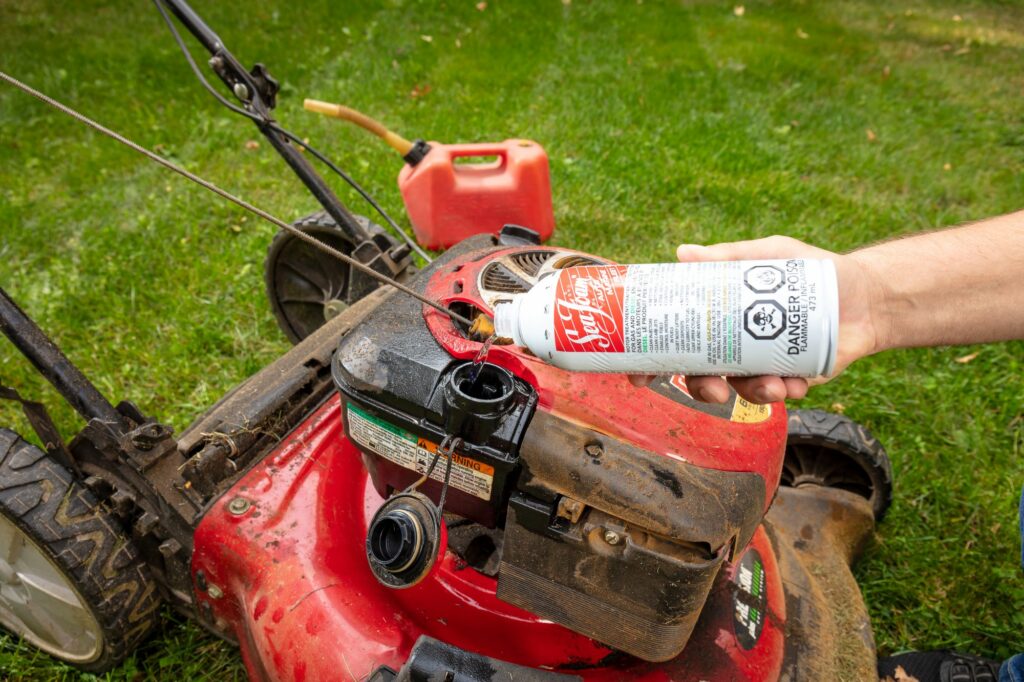Seven lawn mower maintenance tips you need to know before a costly lawn mower repair.
The snow is finally gone, the days are getting warmer and it won’t be long before that brown turf transforms into growing green grass once again.
Homeowners will soon pull out their lawn mowers for the first cut of the season, and for some, the problems that follow might put a damper on the joy of spring. No starting, hard starting, rough idle, stalling, loss of power—these issues send many mowers to the repair shop this time of year.
To help you avoid common mower problems and potentially more costly repairs, we put together a list of maintenance tips. We started with that all-important fuel system and included some other notes that are just as important for a great lawn this spring.
1) Use the correct fuel
Be sure to run the fuel specified by your machine’s manufacturer. Most outdoor power equipment was designed, built, and warranted to run on blends of 90 percent or more unleaded gasoline. The wrong blend can lead to harmful residues and corrosion that will stress the engine over time, decreasing performance.
2) Stabilize your fuel
Regardless of what blend you use, any fuel that sits for longer than 30 days should be stabilized to prevent suspended fuel gum and varnish deposits that will form and cause hard starts and rough engine performance. 10 mL of Sea Foam Motor Treatment per liter of fuel will stabilize stored fuel for up to two years. Sea Foam can be added to fuel at the same ratio throughout the mowing season to help keep the carburetor passageways clean and your mower running smooth.
3) Clean your air intake
A clean intake starts with the air filter. Some foam filters can simply be washed, dried and put back in place. A dirty paper filter should be replaced, though removing it for a periodic tap or vacuum can help keep it free of big debris during the season. Next, to reduce carbon buildup, further dissolve sticky fuel residue and lubricate the upper cylinders all the way through the exhaust stroke, add Sea Foam Spray directly into the carburetor intake. Check out our mower maintenance video for simple instructions on how to do this.
4) Check your spark plug
Spark plugs can last several years, but since they’re an essential part of a strong-running mower, it’s good to check them for signs of fouling from rich fuel, oil or carbon buildup. A clogged air filter, worn piston rings or valve seals, or carburetor issues—though all problems in their own right—can lead to a fouled spark plug. Be sure to buy the manufacturer-recommended spark plug and gap it correctly.
5) Change your oil
Oil should be changed in your mower at least once a season. Use the manufacturer-recommended oil viscosity and be sure to maintain the proper level throughout the season. A rich fuel condition can also cause unburned gasoline to leak past pistons rings into the oil.
6) Sharpen your blades
Dull mower blades will not only produce a poor cut—actually tearing your grass instead of slicing it in the worst cases—but they will also cause your mower to work harder than it should. That overwork can lead to more rapid wear on parts and a shorter life. You can sharpen your blades yourself with a grinding wheel, or take them to a shop.
7) Keep your mower clean.
There’s no need to break out the polish like you might for your car, but keeping your mower free of grass buildup, dirt and grime is just another simple way to keep it running efficiently.
Follow these tips and you’ll have a headache-free mowing season, and a beautiful lawn to show for it.

